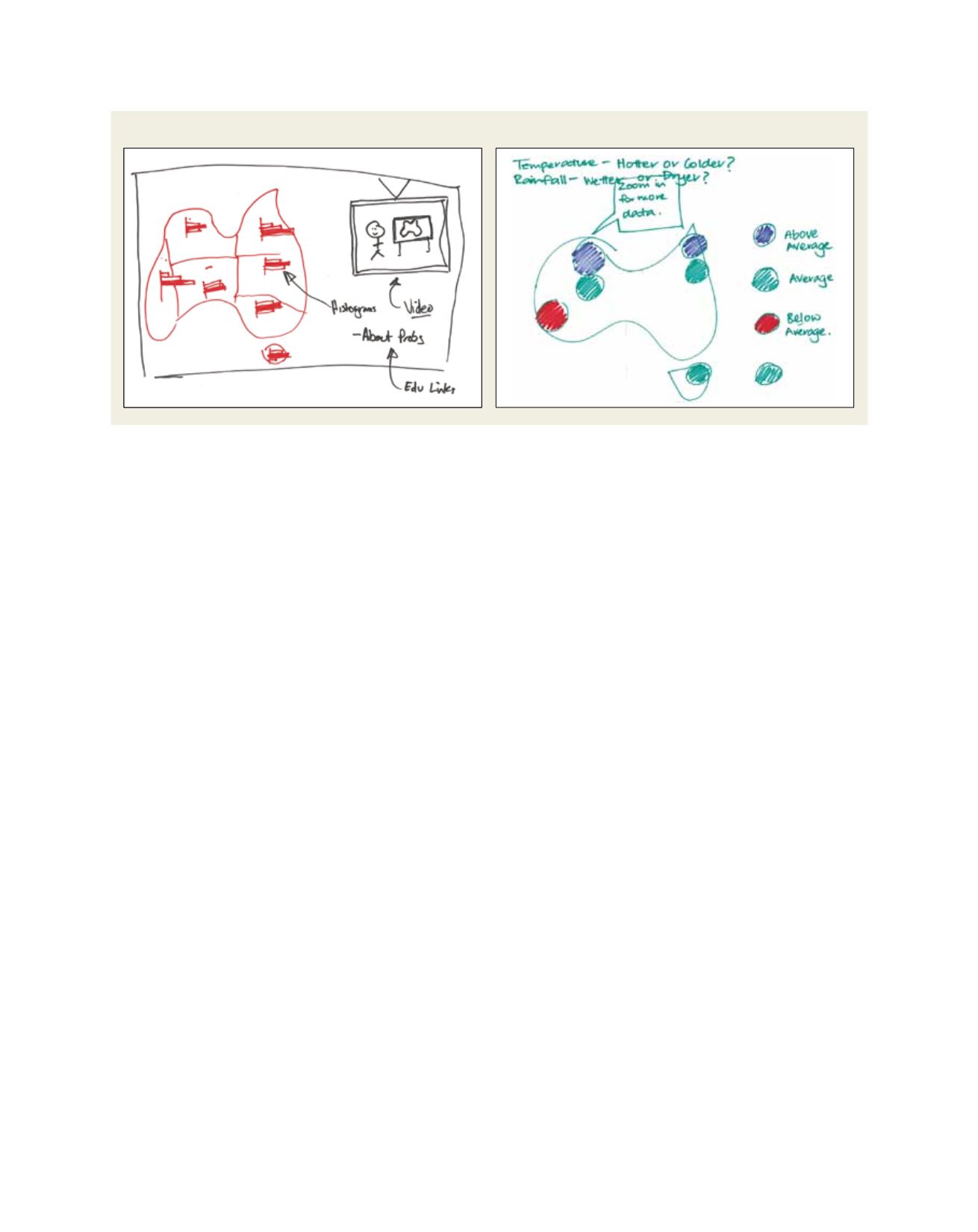

[
] 235
C
ommunities
tors (for example, bushfire, flood, sheep chill risk). The frequency of
seasonal updates will not change, only their appearance.
Expansion and knowledge transfer
The results of this project had value to other areas of the Bureau
that also face the challenge of communicating complex, multilay-
ered probabilistic information to a wide user group, such as those
working in disaster mitigation, extreme weather and flood forecast-
ing. More broadly, the results provided insights about users’ general
preferences for web-based products. This information was shared
through presentation of two internal seminars, which were filmed,
the development of a project website,
4
and a project brochure.
Aside from improving understanding on how best to depict proba-
bilistic information, the project was also regarded as being a highly
successful pilot of a new user-centred design process for product rede-
sign. Accordingly, the lessons from this project’s success also relate
to the use of an interdisciplinary project team. The employment of
a generalist (rather than technical specialist) project manager, with
expertise in managing multidisciplinary teams, was important. This
allowed seamless integration of advice from scientists, designers and
communications experts, and the creation of a synergistic and posi-
tive team environment. Particularly valuable was the use of a neutral
external market research agency with genuine expertise in properly
understanding and synthesizing disparate user responses, while the
Communication and Adoption Team Manager provided valuable ‘on
call’ advice. Finally, the active involvement of the science product
manager was crucial. He had an extensive network of contacts with
key stakeholder groups and the project was able to leverage this to gain
extensive, deeply considered and detailed user feedback. His involve-
ment and that of other scientists from the climate prediction section
ensured the design concepts remained grounded in scientific realism.
Challenges to moving forward
The design concepts produced in this project remain only ‘abstract’
design notions created by a graphic designer; they are yet to be tested
with real data. The production of working prototypes that also achieve
aesthetic and communication objectives will be a challenge. There are
also several practical issues to consider. Significant staff and informa-
tion technology resources will be required to develop and
test the new prototypes, and effort must be maintained
in the area of ongoing user consultation. A coordination
challenge will be the need to strive for a similar ‘look and
feel’ across the Bureau’s entire web product range.
Finally, in this consultation project, users told the
Bureau that they wanted more visual representation of
the data. This raises some scientific and technical issues
about how data is accurately ‘cartoonised’ so as to appear
neat and clear yet also scientifically accurate. For example,
should all areas of high probability of above median rain-
fall be depicted, even if they are ‘pin prick’ size, or should
climatologists be able to manipulate the cartoon graphics
to simply indicate the main general trends?
Honouring the principles of the Global
Framework for Climate Services
Principle 8 of the Global Framework for Climate Services
emphasizes the importance of user-provider partnerships.
This project has demonstrated the strength of ongoing
user consultation at a wide range of levels. Achieving
broad consultation between those with a sophisticated
level of scientific knowledge and those from a non-scien-
tific background, or between inhabitants of tropical zones
and of alpine areas, requires a multilayered, deep and wide
consultation process. Using several consultation methods
(interviews, focus groups and online surveys) helps to
capture and amalgamate the variety of viewpoints. The use
of market research specialists to manage the information
gathering process and also analyse the disparate results is
a highly defensible and robust way to ensure user needs
are carefully identified and expertly addressed.
Acknowledgement must be given to the expertise provided by
other project team members (not already listed as authors):
Grant Beard, Agata Imielska, Michael Shaw, Jenny Hunter
and Robyn Duell. Critical input was also received from Neil
Plummer, David Jones and Rob Morton.
Workshop participants sketched new designs to enhance climate resources for users
Source: National Climate Centre
















